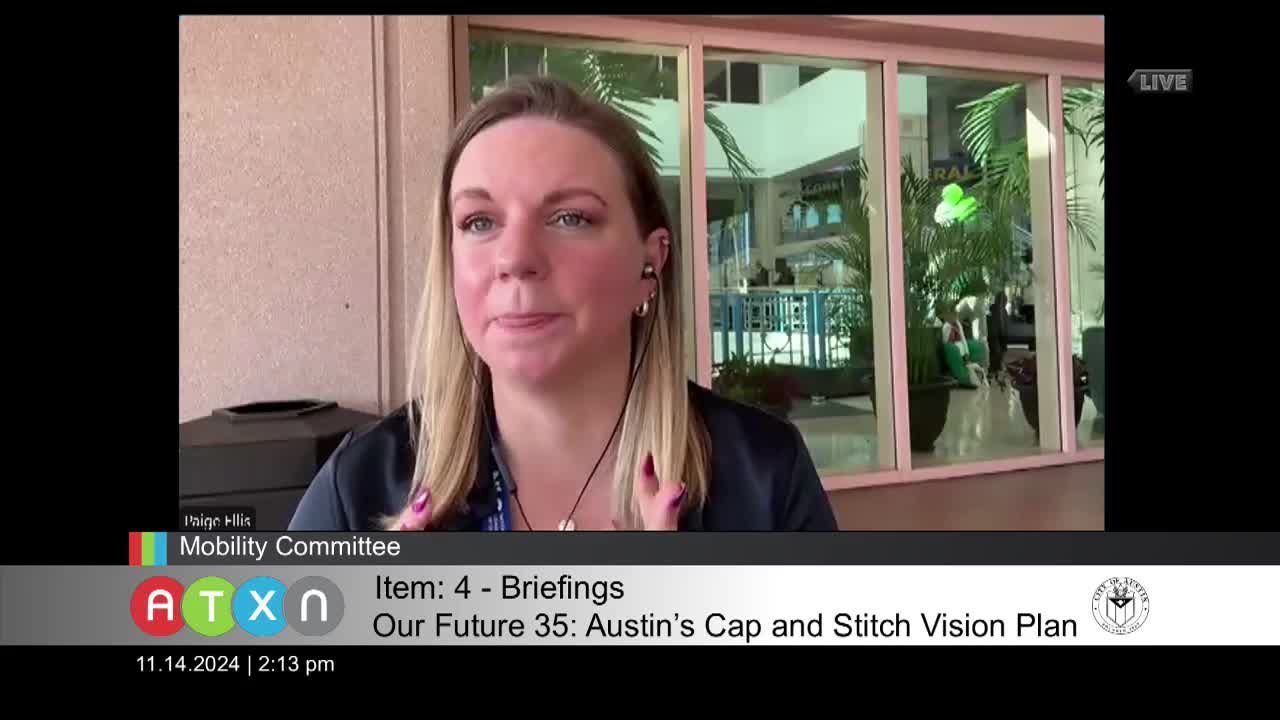Activists demand alternatives to controversial highway expansion
November 14, 2024 | Austin, Travis County, Texas
This article was created by AI summarizing key points discussed. AI makes mistakes, so for full details and context, please refer to the video of the full meeting. Please report any errors so we can fix them. Report an error »

The Austin City Council's Mobility Committee meeting on November 14, 2024, highlighted significant community concerns regarding the proposed expansion of the MoPac South project. The Central Texas Regional Mobility Authority (CTRMA) is advocating for the addition of two toll lanes in each direction, alongside general purpose and auxiliary lanes. However, community members and advocates are urging the council to consider alternatives that align with the city’s values and vision for sustainable development.
Miriam Schoenfeld, representing Rethink 35, emphasized the potential negative impacts of highway expansion, arguing that it could exacerbate car dependency and undermine efforts to promote dense, transit-oriented development. She pointed out that expanding highways often leads to increased traffic and emissions, counteracting the city’s environmental goals. Schoenfeld called for a thorough examination of alternatives that would prioritize congestion-free routes for transit without resorting to extensive highway expansion.
Bobby Levinsky, an attorney with Sabar Springs Alliance, echoed these sentiments, stating that while MoPac requires upgrades, simply adding more lanes is not the solution. He stressed the importance of exploring options that do not compromise the city’s commitment to sustainable transportation.
The discussions also touched on the historical context of transportation decisions in Austin, with council members acknowledging the need for cultural sensitivity and recognition of past inequities, particularly regarding the transformation of East Avenue into I-35. This historical perspective underscores the importance of thoughtful planning that honors the community's diverse narratives.
As the city grapples with these complex issues, the Mobility Committee's discussions signal a critical moment for Austin's transportation future. The council is urged to prioritize community input and explore innovative solutions that align with the city’s long-term sustainability goals. The outcome of these deliberations will have lasting implications for Austin's mobility landscape and its commitment to equitable development.
Miriam Schoenfeld, representing Rethink 35, emphasized the potential negative impacts of highway expansion, arguing that it could exacerbate car dependency and undermine efforts to promote dense, transit-oriented development. She pointed out that expanding highways often leads to increased traffic and emissions, counteracting the city’s environmental goals. Schoenfeld called for a thorough examination of alternatives that would prioritize congestion-free routes for transit without resorting to extensive highway expansion.
Bobby Levinsky, an attorney with Sabar Springs Alliance, echoed these sentiments, stating that while MoPac requires upgrades, simply adding more lanes is not the solution. He stressed the importance of exploring options that do not compromise the city’s commitment to sustainable transportation.
The discussions also touched on the historical context of transportation decisions in Austin, with council members acknowledging the need for cultural sensitivity and recognition of past inequities, particularly regarding the transformation of East Avenue into I-35. This historical perspective underscores the importance of thoughtful planning that honors the community's diverse narratives.
As the city grapples with these complex issues, the Mobility Committee's discussions signal a critical moment for Austin's transportation future. The council is urged to prioritize community input and explore innovative solutions that align with the city’s long-term sustainability goals. The outcome of these deliberations will have lasting implications for Austin's mobility landscape and its commitment to equitable development.
View full meeting
This article is based on a recent meeting—watch the full video and explore the complete transcript for deeper insights into the discussion.
View full meeting
